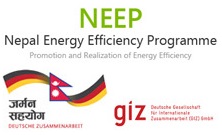Steam Distribution System
General layout and location of steam consuming equipment is important for efficient distribution. Steam pipes laid by the shortest possible distance would provide optimum efficiency together with a proper sizing of pipelines, proper provision to drain the condensate and proper distribution of moisture separator with traps.
Piping
If the pipe is too small, the pressure drop would be high. On the other hand, if it were too big, the surface heat losses would be more. Normally pipe sizes are optimized based on carried velocity or pressure drop.
| Steam | Velocity in m/sec |
|---|---|
| Exhaust steam | 20-30 |
| Saturated steam | 30-40 |
| Super heated steam | 50-70 |
If the specific volume is known, the flow W, in kg/h, can be calculated as:
W = 0.00287 d2V/U
Where
d = Diameter of the pipe in mm
V = Velocity in m/sec
U = Specific volume in cum/kg
Minimizing pipe size will nevertheless reduce capital costs and surface heat losses
Insulation
Thermal insulation provides important safety, energy savings, and performance benefits. Surface heat loss forms a large portion of the heat loss that occurs in the steam distribution system. It is essential to have an efficient insulation on all hot surfaces including surfaces of distribution pipelines and steam consuming equipment. The recommended thickness of insulation will mainly depend on the desired surface temperature after insulation. The energy and cost savings will depend on the size of the pipe diameter and length run, the temperature of the hot surface and the surroundings, heat temperature coefficient and the number of hours of operation of plant/process. Simplified formula for heat loss calculation is given below:
S = [10+ (Ts-Ta)/20]*(Ts-Ta)
Where,
S = Surface heat loss in kCal/hr/m2
Ts = Hot surface temperature in oC
Ta = Ambient temperature in oC
Total heat loss/hr = S*A
Where 'A' is the surface area in m2
Steam traps
Steam traps are essential for proper distribution system performance. The main purpose of a steam trap is to discharge condensate without releasing steam. There are four main types of steam traps as given below that accomplish this in different ways.
| Mechanical Traps |
Operates on the difference in density between condensate and steam 1) Float traps a) Plain Float b) Trip Float 2) Bucket Traps a) Open top Bucket b) Inverted Bucket |
|---|---|
| Thermostatic Traps |
Operates by sensing a difference in temp between condensate and steam 1) Balanced Pressure 2) Liquid Expansion 3) Bimetal Traps |
| Thermodynamic Traps |
Operates on the forces generated by flashing condensate and steam flowing through orifice 1) TD trap |
| General Traps |
1) Impulse 2)Pilot operated 3)Labyrinth 4)Orifice plates |
Selection of steam trap for particular application is critical for effective condensate removal. In the same line Trap testing at regular intervals and identification of malfunctioning traps in a systematic manner is necessary. Several methods of testing may be employed such as checking for high temperature at inlet, installing sight glasses or ultrasonic detectors at outlets, etc. Traps incorporated with sensing devices are available, which can easily be checked manually or with a computer based monitoring system.
Condensate recovery
Steam condenses after giving off its latent heat in the heating coil or the jacket of the process equipment. A sizable portion (about 25%) of the total heat contained in the steam leaves the process equipment as condensate (hot water). If this hot condensate is returned to the boiler house, it will reduce the fuel requirements in the boiler. For every 6°C rise in the feed water temperature there could be a 1% saving in boiler fuel consumption.
Since the condensate is a pure form of water, it can be used as boiler feed water without further treatment. This not only reduces the fuel consumption in the boiler, but also results in saving raw water and the chemicals required to treat it. The economics of condensate recovery depend on the quantum of condensate recovered, the temperature of condensate, type of boiler, plant layout and the distance of transportation of the condensate.
Payback of energy saving options
Experience from the past has shown that implementing energy saving options in steam distribution system is highly profitable with payback of investment of less than 3 years.
Table 1: Payback of investment of energy saving options for steam distribution system
| Options | Estimated payback period |
|---|---|
| Arrest all steam leakages | Immediate |
| Ensure proper insulation of pipes, valves, flanges and fittings | About 1 year |
| Recover flash steam from condensate | < 1 year |
| Recover all condensate from traps | 1 year |
| Replace dysfunctional traps | < 1 year |
| Optimize the pipe size, length, orientation for reducing losses | 2-3 years |
| Ensure proper air venting for better heat transfer | < 1 year |



